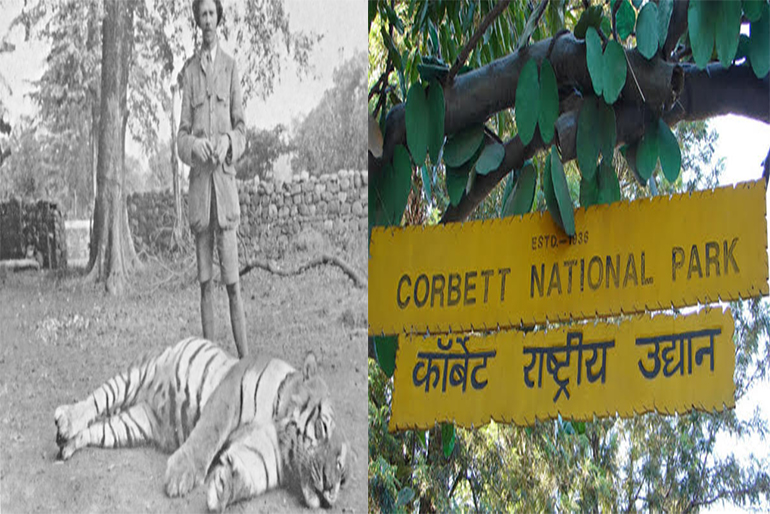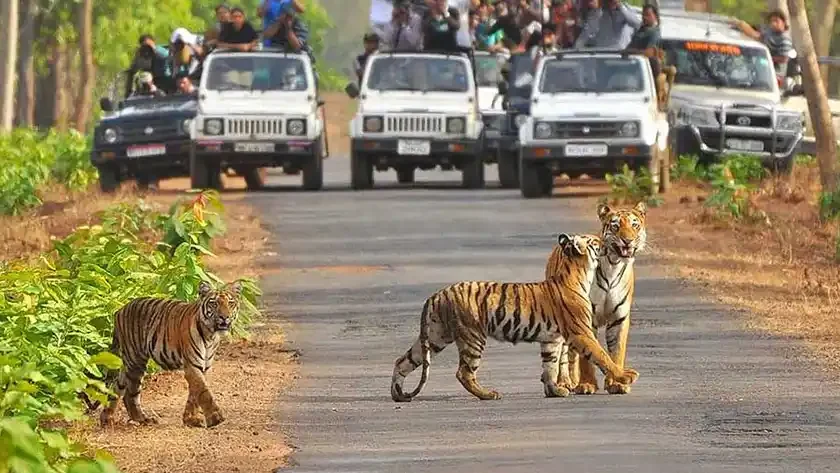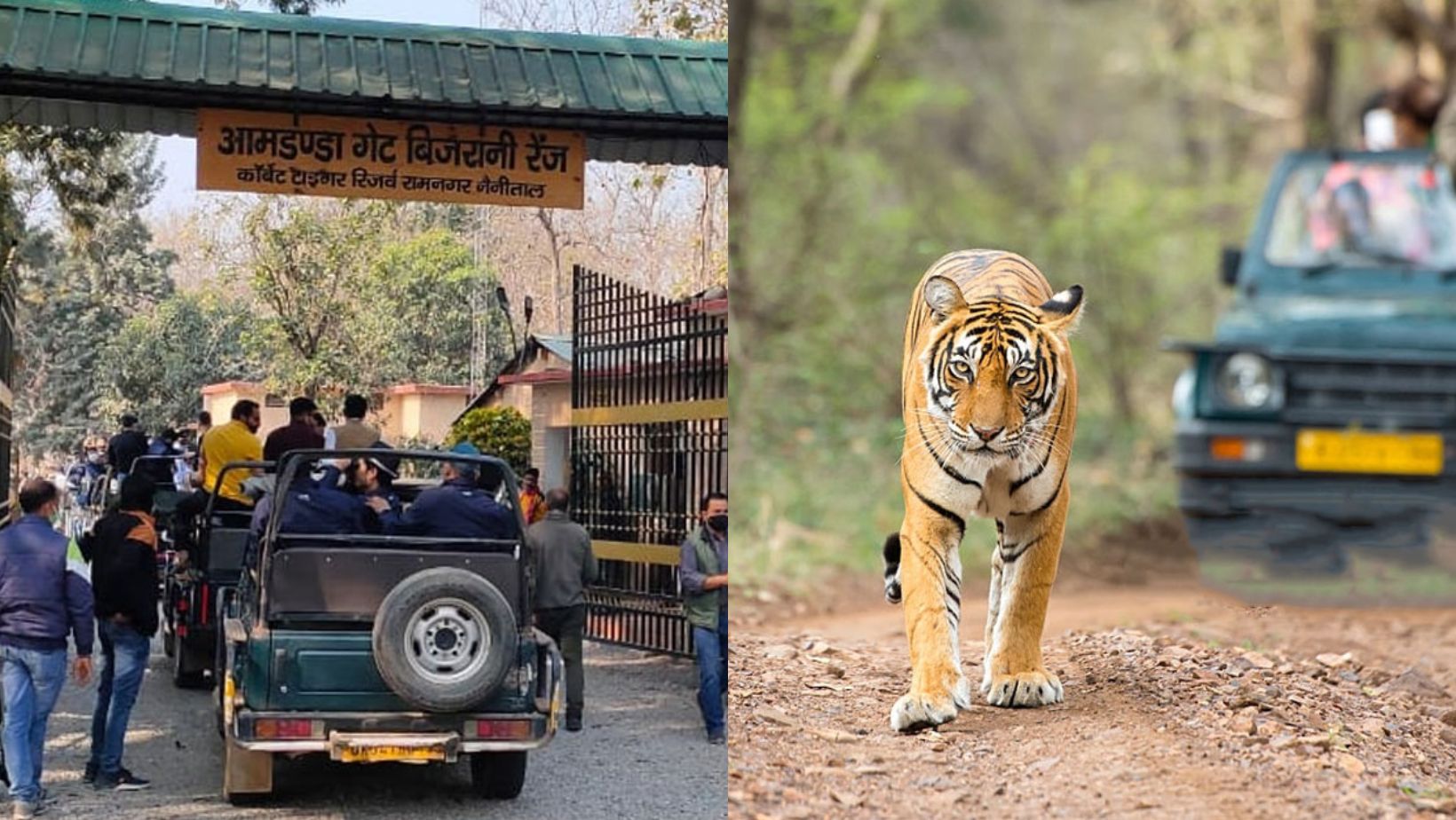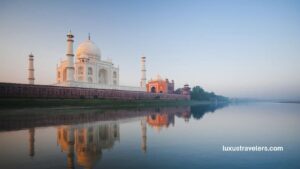Welcome to the enchanting world of wildlife and wilderness! Embark on a thrilling journey as we invite you to explore Jim Corbett National Park in Uttarakhand, India. In this lush haven, where nature’s symphony thrives, you’ll not only witness incredible biodiversity but also uncover the rich history of conservation. Join us on an adventure that transcends time and space, where the echoes of Jim Corbett’s legacy mingle with the roars of tigers. Get ready to be spellbound as we unravel the secrets of Explore Jim Corbett National Park.
I. The Birth of a Legacy
The park, originally designated as Hailey National Park during its establishment in 1936, underwent a name change in 1957 to honor the celebrated British hunter, conservation advocate, and author Jim Corbett, in acknowledgment of his exceptional contributions to wildlife conservation and his pivotal role in the park’s creation, ultimately becoming the renowned Jim Corbett National Park.

Jim Corbett’s legacy extends beyond his reputation as a skilled big-game hunter; he was also a staunch defender of wildlife. His literary works, notably the timeless tome “Man-Eaters of Kumaon,” illuminated the complexities of human-wildlife conflict in the area and played a pivotal role in inspiring the establishment of the park. The conservation initiatives initiated in his honor continue to carry forward his enduring influence.
Also read – Best Places For Travelers To Explore: Out Of India
II. Natural Diversity: Flora and Fauna
The expansive Jim Corbett National Park covers an area of more than 520 square kilometers, embracing a rich tapestry of ecosystems, from lush woodlands to expansive grasslands and pristine wetlands. This diverse array of habitats provides a nurturing environment for a remarkable spectrum of plant and animal life.
A. Wildlife:
- Bengal Tiger: Jim Corbett National Park is renowned for its population of Bengal tigers, making it one of the prime destinations for tiger enthusiasts. The park is home to a significant number of these majestic predators.
- Elephants: Besides tigers, the park is inhabited by Asian elephants, which are often seen grazing in the grasslands.
- Leopards: Within the park’s boundaries, leopards silently traverse, exhibiting a greater degree of elusiveness compared to tigers; should fortune favor you, a rare sighting of these splendid felines might be yours to behold.
- Various Deer Species: The park hosts a variety of deer species, including spotted deer (chital), sambar deer, and barking deer. These herbivores are essential prey species for the park’s predators.
- Sloth Bears: Sloth bears, with their shaggy coats and unique appearance, are another highlight of the park’s fauna.
- Crocodiles and Gharials: The Ramganga River, which flows through the park, is home to crocodiles and critically endangered gharials, which are a type of freshwater crocodile.
B. Birdlife:
Jim Corbett National Park is a birdwatcher’s paradise, with over 600 species of birds recorded within its boundaries. From the strikingly colorful kingfishers to the majestic crested serpent eagle, the park offers a diverse avian spectacle that is sure to captivate any bird enthusiast.
III. The Historical Significance
Beyond its remarkable biodiversity, Jim Corbett National Park holds significant historical importance. The park’s landscape and landmarks offer a glimpse into its intriguing past.
A. Ancient Corbett Village:
The park area was inhabited by local communities for centuries before its establishment. Corbett Village, which gave the park its name, was once a thriving settlement. Exploring the remnants of this village is a journey through time, as you imagine the way of life of the people who lived here.
B. The Kalagarh Dam:
Built across the Ramganga River, the Kalagarh Dam is a testament to human engineering in the midst of wilderness. This historic dam was constructed by the British in the early 19th century and played a vital role in irrigating the region.
C. Tales of the Man-Eaters:
Jim Corbett himself, after whom the park is named, was renowned for hunting down man-eating tigers and leopards that terrorized the local communities in the early 20th century. His courage and marksmanship in dealing with these notorious predators are legendary, and his exploits are still recounted in the region.
IV. Exploring Jim Corbett National Park

Also read – Top 10 Hotels In Goa With Stunning Views
Also read – 10 Best Destinations For Vloggers In December: Capture The Magic
- Safaris:
Discovering Jim Corbett National Park proves to be an exciting journey all on its own. Within the park, a multitude of safari experiences awaits, ranging from thrilling jeep safaris to enchanting elephant safaris. These remarkable expeditions grant you the chance to delve deep into the park’s core, presenting unique opportunities to observe wildlife thriving in their undisturbed natural surroundings.
- Dhikala Zone:
The Dhikala Zone stands out as a favored region within the park, providing an opportunity for overnight stays amidst the untamed wilderness, enveloped by a rich tapestry of plant and animal life. Dhikala is renowned for its expansive grasslands, making it an ideal location for observing both tigers and elephants.
- Bijrani Zone:
The Bijrani Zone has gained renown for its picturesque allure, making it a perfect haven for avid bird enthusiasts. Its terrain encompasses everything from expansive grasslands to lush, thick forests, creating an optimal sanctuary for an extensive array of wildlife species.
- Jhirna Zone:
The Jhirna Zone is open to tourists year-round and is particularly known for its resident population of sloth bears. It’s also a great place for birdwatching and nature walks.
- Corbett Museum:
For a more profound exploration of the park’s past and the individual it was named after, consider a visit to the Corbett Museum situated in Kaladhungi. This museum showcases a collection of keepsakes, personal possessions, and historical artifacts associated with Jim Corbett, providing an opportunity for guests to establish a personal connection with the iconic figure.
V. Conservation Efforts
Jim Corbett National Park stands as a testament to both its captivating natural allure and its pivotal role in safeguarding biodiversity. The park’s administration unwaveringly dedicates itself to the protection of its ecological heritage and the continued existence of imperiled fauna.
A. Community Involvement:
Local communities play a vital role in the conservation efforts within and around the park. Initiatives are undertaken to engage and educate them about the importance of wildlife conservation while also providing alternative livelihood options to reduce human-wildlife conflicts.
B. Research and Monitoring:
The park conducts extensive research and monitoring programs to study the behavior and ecology of its wildlife. This information helps in formulating effective conservation strategies.
C. Anti-Poaching Measures:
Relentless endeavors to counter poaching and the illicit wildlife trade employ cutting-edge technology, including camera traps and drones, for monitoring and safeguarding.
VI. Responsible Tourism
While visiting Jim Corbett National Park, it’s crucial to be a responsible tourist. Here are some guidelines to follow:
- Respect Wildlife: Maintain a safe distance from animals, and never disturb them or their habitat.
- Follow Park Rules: Abide by the park’s regulations, including speed limits and noise restrictions.
- Stay Eco-Friendly: Choose eco-friendly accommodations and minimize your environmental footprint.
- Support Local Communities: Contribute to the local economy by purchasing souvenirs and products made by the communities living around the park.

Also read – Bali Vs Maldives: Which Should You Visit?
Conclusion
In conclusion, embarking on a journey to Explore Jim Corbett National Park in Uttarakhand is not merely a vacation; it’s an encounter with nature’s grandeur and a dive into history. Amidst the lush wilderness, you’ll trace the footsteps of Jim Corbett himself, connecting with a legacy that reverberates through time. As you venture through this pristine haven, you’ll not only witness the park’s captivating wildlife but also delve into the rich history that shaped its existence. In the heart of Uttarakhand, this park offers not just adventure but a chance to truly appreciate the natural world and its intriguing past.
Also read – Make This Valentine’s Day Special in 2024 with 5 Romantic Ideas




